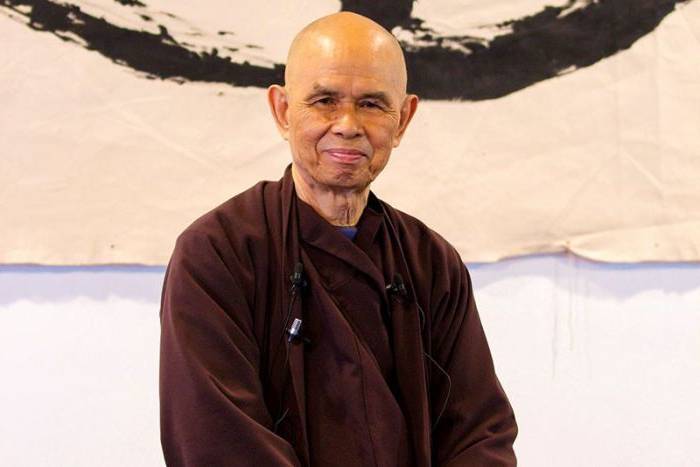Thich Naht Hanh is a Zen Buddhist master, who has gotten some pretty interesting advice about what it really means to truly let go or ace the art of letting go. According to a lot of people, detachment or non-clinging is supposed to be a form of emotional aloofness and isolation from others.
However, Hanh thinks that truly letting go is basically, loving someone more than you have ever loved them before. The Buddha preaches that detachment is one of the disciplines on the Noble Paalso and is also called ariyasaavaka. It is neither a physical act of withdrawal nor a form of austerity.
Though he teaches about a non-action which is an important part of the Right Way, if taken out of context it may give an impression that we should rather develop a lack of care and concern for others, and that we should live our lives without truly expressing or embracing our emotions. Basically just cutting ourselves off from life.
These types of misinterpretations are unfortunately quite common since there direct translations from the Paali language into English are not always available.
This kind of detachment is an incorrect understanding of the Buddha’s message. The master states that to truly let go we must learn to love more wholly. Real detachment only happens when our love for the other extends beyond our own personal expectations and anticipations of a particular, desired outcome.
Hanh has described four forms of complete detachment, and none of them are about hiding yourself in a cave and ignoring everyone who has broken your heart or holding back your lust and desire for a romantic interest. This is not detachment at all.
Letting go means diving in. For example:
Friendship
Hanh states the importance of Maitri. It’s not love as we normally comprehend in a westernized use of the word. He tells that the first aspect of true love is maitri, metta in Pali. This is the intention and capability to offer joy and happiness. To develop that capability, we should practice looking and listening patiently and deeply so that we know what to do what not to do to keep others happy.
Offering your beloved something they do not need is not maitri. You should instead watch their real situation or what you offer might bring relief and happiness.
In simpler words, your detachment may result in accepting that few things that you would normally do to express your love and appreciation for another person, may not be what that respective person actually needs.
Instead of having an ego-driven intention to please someone and forcing that behavior on them, you can simply just detach from that urge and need within yourself and observe what really makes the person you love feel comfortable, safe, and happy.
He further explains that we should use language more carefully. Love is an incredibly beautiful word; we should restore its actual meaning. The word maitri is driven from the word mitra which means a friend. In Buddhism, the basic meaning of love is friendship.
Compassion
The next form of true detachment according to the Zen master is compassion. Talking about the art of letting go, we don’t have to stop offering a compassionate word, hand, or a way to help someone who is in suffering from pain.
That doesn’t mean we should expect ourselves to take their hurt or pain away. Compassion contains deep concern and sympathy for others, not aloofness or isolation.
The master smiles since he understands why pain and suffering exist. Also because he knows how to transform it into something better. You are likely to get involved more deeply in life when you become detached from the ultimate outcome. Again, this definitely does not mean you don’t fully participate or help in others’ pain and hardship.
Gratitude
You practice gratitude in truly letting go. Mudita is the joy and happiness that arises when we are overcome with gratefulness and gratitude for all that we have, Ina way that we no longer feel like clinging to other awaited result. Buddha’s elaboration of joy is more like Unselfish joy.
It means that we find happiness not only when something good happens to us, but also when others find prosperity and happiness.
Have you ever had to say goodbye to someone you loved or friend, so that they could continue on their desired path of life? A path that may not have continued if it was intertwined with your own?
If yes then you must’ve felt the hurt and the pain when someone seemed to take your place like if they found someone new to love, or made a new friend.
To get you correct, this is not true detachment. Real joy arises when you find happiness when others find joy despite of it having little or nothing to do with you. It is when you truly ace the art of letting go.
Equanimity
Hanh describes the fourth and final element of true love to be upeksha. This means equanimity, nondiscrimination, non attachment, even-mindedness, and letting go. Here Upa means over, and iksha means to look.
Take it like you climb a mountain to be able to look over the whole situation, not to be bound by one side or the other. If your love is followed by attachment, discrimination or worse, prejudice, it is just not true love.
People who are new to Buddhism sometimes mistaken upeksha for indifference, but in reality, it is neither cold nor indifferent. If someone has more than one child, all their children are equal to them. It does not mean that you don’t love them, but you simply love in a way that all your children receive the love, without any biasness or discrimination.
For a love to be true, it must have all the elements of compassion, joy, gratitude and equanimity – and that is when you truly master the art of letting go.














